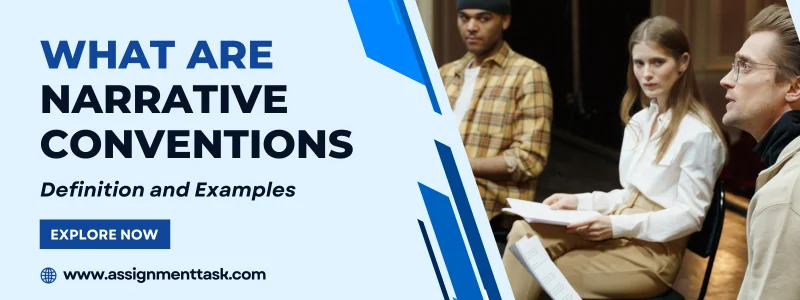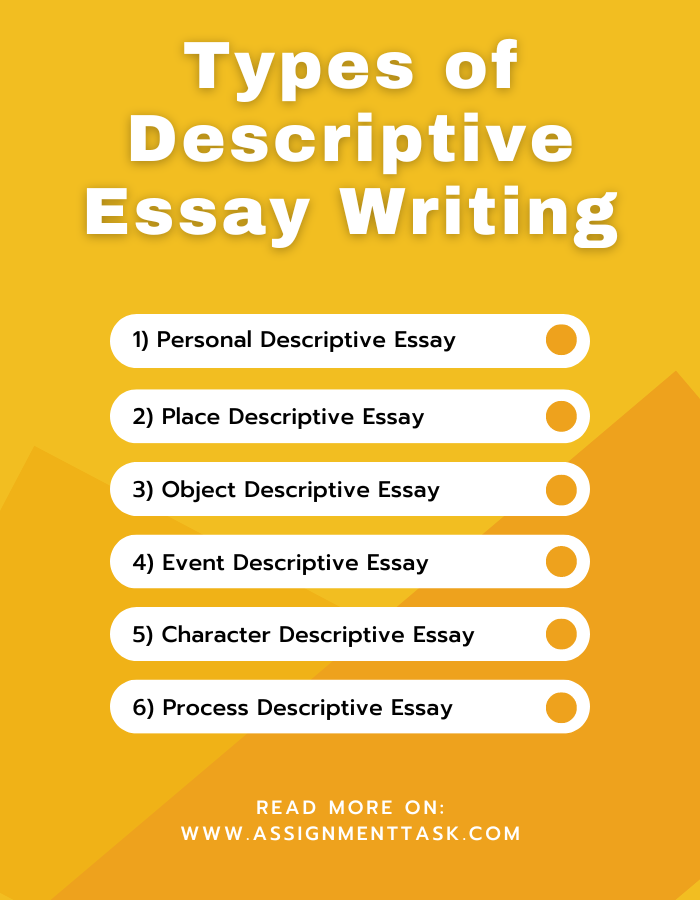Narrative Conventions: Complete Guide of Types, Features and Examples
- Assignment Task Blog
- Aug 13, 2025
- Academic Writing
Narrative Conventions are literary techniques writers use to create meaning in a storyline. They encompass a wide range of aspects, including plot structure, character development, setting, point of view, and various literary devices. They are also used to create a contextual flow in the writing that is easy to understand for writers and readers.
Some students who are not aware of what narrative convention is and how to write it, this is a complete guide for you to understand the types, meaning, examples and everything. Let’s start reading the blog!
Make your storytelling shine—connect with professionals for narrative assignment assistance now.
What are Narrative Conventions? Definition and Core Elements
The majority of literary works, like dramas, stories, novels, etc., are drafted with the help of the Narrative Conventions technique. It is a technique that is used by writers in order to give any meaning to a story or any write-up. A number of things come under this, like character plotting, content development, viewpoint, etc.
Core elements of narrative conventions are as follows:
-
Setting the time and place: Here, time refers to the period during which the particular story took place, while the place defines the exact location where the story took place. Both of these are considered the main backbone in setting up your whole story. The time and place can vary depending on the specific situation and consequences of your story.
-
Plot development: Your writing can be made interesting if you give a thrilling climax to it, creating more complications, tension and thrill. Without proper plotting, your story will be boring to your readers.
-
In order to make your story more interesting and engaging, you need to add conflicts to it. This means arguing with two characters in your writing in a very interesting manner.
-
There always needs to be a very strong point of view in your story comment.
-
Any story without character is like a car without a driver. There always needs to be two main characters in your story, one a protagonist and the other an antagonist. The protagonist is the positive role holder of the entire story plot, while the villain is known as the antagonist. Both these characters are opposed to each other.
-
It is always advisable for you to use descriptive language to express your thoughts and feelings.
- The theme of the story is also very important, and the way the characters speak and act is vital for your story.
Checkout this Blog: How to Write a Descriptive Essay with Complete Guide
Why Are Narrative Conventions Important in Storytelling?
The narrative conventions are crucial in the art of storytelling because they provide you with a framework to help the readers understand and engage with your narrative.
With the help of narrative techniques in storytelling, a shared understanding between the writer and the reader can be established. Thus, it makes it easier to follow the story plot, grasp the story theme as well interpret the characters.
It is important due to the following reasons:
-
Structure and Characterisation: Narrative conventions, such as plot, setting, and character, provide a structure to organise your story. They make it easier for your audiences to follow the sequence of events in your storyline and understand the characters well.
-
Immersion and Engagement: If you use this concept, you can always create a sense of familiarity and comfort by drawing your reader into your narrative and encouraging them to dive more emotionally into your story.
- Making the Meaning: Narrative conventions always help your readers interpret the events of the storyline and guide them towards a deeper understanding of the story plot.
These are the most important of the narrative conventions in English.
Struggling with narrative conventions? Get expert help on your assignment today!
Types of Primary Narrative Conventions
This is the very first step in the primary narrative convention. The necessary steps are as follows:
-
Setting: In the story narration, you need to establish a number of things. So, it forms the base of everything. First, you need to decide the time to be taken and the things that will be happening. This is essential since it will give a constant flow to your writing.
-
Plot Development: The next step concerns the plot event of your story. Here, you need to decide the very basic things in your storyline and how to keep it going and continuing, such as the climax setting and the twists. This is the step where your entire storyline will be established.
-
Characters: After you plan the storyline, the next major thing in the narrative convention is deciding the characters of your story. This step gives weightage to your storyline and helps you engage with the quality of your narrative story content, giving your story a true sense.
-
Conflicts: In order to keep the readers engaged in your story, it is essential that you add conflicts. Students are often unsure about this, which is what will attract the readers. In their content, if the added conflicts make things better and interesting. This will always enhance the reading time of the story you are working on.
-
Theme and Language: This is the final step of the first part of the narrative convention. Here, you need to decide the basic theme of your story and the related language. The writing team does it very carefully. Thus, it is always a significant factor to determine whether things are effective for you. An ideal theme and language will help you get a good grade on your assignment.
-
Characterisations: The Characterisations of your story make things more appealing to the audience. Here, you need to define all the characters of your story plot. It describes the main lead, impact on the story, roles and behaviours, etc. Here, the main part of your narration is thoughts, feelings, and interactions.
-
Descriptive Language: Usually, the writers use descriptive language techniques to expand the level of literary commitment towards their readers. By using the tools of this descriptive language, you can try to make the coordination between the tendency and taste of your readers.
- Point of View: In a point-of-view narrative, you can tell the storyline from three different viewpoints: the first person, the second person, and the third person.
Types of Secondary Narrative Conventions
In the secondary narrative conventions, you need to maintain the psyche of your reader. Types of Secondary Narrative Conventions are as follows:
-
Character Development: To make your reader connect with your stories, you need to develop the character. It should bring life to your story.
-
Mood: It should uplift the sense of the story you are going to make. Here, you need to describe the atmosphere, situations, etc. You can exaggerate it a bit to make it more interesting to your readers.
-
Tone: It is the manner in which your story characters will talk.
- Voice: It refers to the ideas, positions, and views as prescribed by the characters.
Master narrative techniques the smart way—let our experts guide your assignment success!
Language Features in Narrative Conventions: A Guide for English Students
Narrative conventions in English literature refer to the devices and techniques used to write stories more effectively. Its features are as follows:
-
Characterization: It is the way with you reveal the chances of your story with their traits, personality and motivations.
-
Setting: It is the time and place where your story unfolds.
-
Plot: It is the sequence of events in your narrative story.
- Conflict: It refers to the problem or struggle that drives your story forward.
Read Our Blog: Language Techniques with Examples for Students
Some Examples of Narrative Conventions for Better Understanding
The narrative conventions examples are as follows:
-
Setting: It is the background where your story is set.
-
Plot: This is the main theme of your story
-
Character: They are the elements that make up your story
-
Flashback: This narrative technique introduces the curt story narrative for past events.
-
Foreshadowing: It is the clues or hints about the events that will happen later on in your story.
-
Symbolism: Symbolism is a narrative convention that uses characters, objects, and settings to represent abstract concepts or ideas.
- Dialogue: The conversations between the characters reveal their personalities as the story progresses.
How to Learn Narrative Conventions Effectively: Tips from Experts
-
Narrative structure: You always need to maintain a very good narrative structure, literary devices: you always need to use the best literary devices to write the narrative essay in the best manner.
-
Language features in narrative should be appropriately maintained.
-
Examples of narrative conventions in film and literature include stories or narratives.
- Seek feedback: You always need to seek valuable feedback from your seniors.
Turn your narrative assignment into an A+—get help from seasoned professionals!
Wrap up
Thus, you can see that writing a good narrative is not easy. Sometimes students are not sure if it will work or not. Many times, bad writing skills make things much tougher. Therefore, you always need the help of the best academic writing help service provider, which is the top choice for you. Our team of professional writers will make it easy for you to score good grades. For everything you need, you can always contact Assignmenttask.com. We are the ultimate choice for you in this regard.
Why Assignmenttask.com?
-
We are always the number one English assignment help online service provider
-
Around the world and the clock, service is provided by us
-
We always ensure the best grades
-
Top team of writer works with us to provide you with valued services
- Only original and quality assignment content is provided by us
Thus, connect with our experts today!











